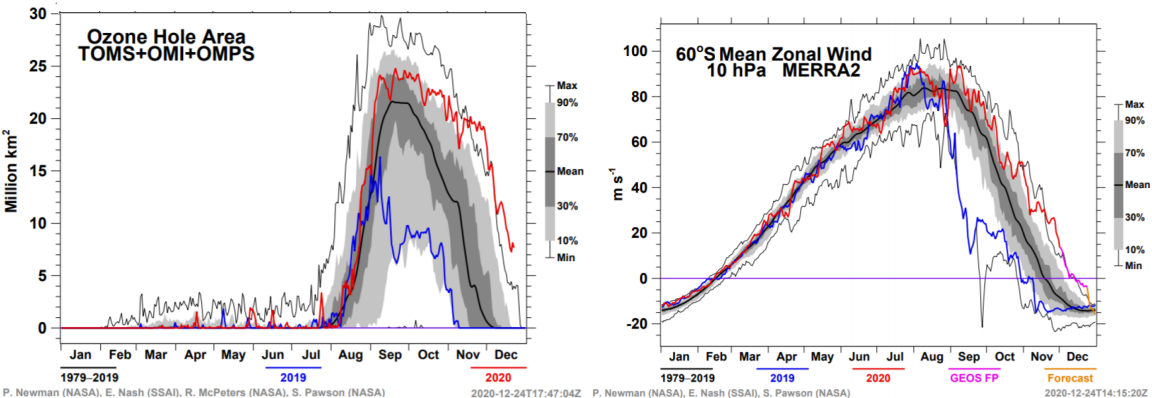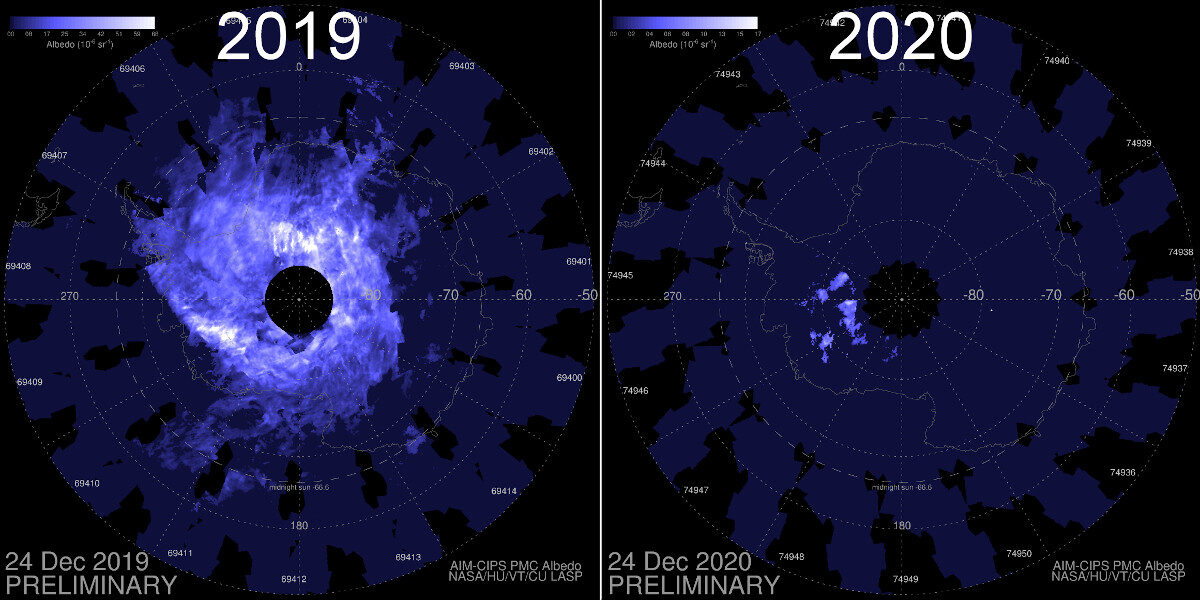"The comparison really is astounding," says Cora Randall of the University of Colorado's Laboratory for Atmospheric and Space Physics. "Noctilucent cloud frequencies are close to zero this year."
NLCs are Earth's highest clouds. They form when summertime wisps of water vapor rise up from the poles to the edge of space. Water crystallizing around specks of meteor dust 83 km (~50 miles) above Earth's surface creates beautiful electric-blue structures, typically visible from November to February in the south, and May to August in the north.
A crucial point: Noctilucent clouds form during summer. And that's the problem. Although summer officially started in Antarctica one week ago, the southern stratosphere still seems to think it's winter. In particular, the stratospheric polar vortex, which should be breaking up around now, is stubbornly hanging on. The polar vortex chokes off gravity waves, which would normally carry water vapor into the upper atmosphere. Without water vapor, NLCs cannot form.

Eventually, the stratosphere will shift into its summer-like state, and NLCs can begin to blossom. But when? Researchers don't know. If the clouds remain suppressed only one more week, it will break previous records of low NLC activity in the southern hemisphere. Stay tuned for updates right here on Spaceweather.com.




Sigh...mid summer.